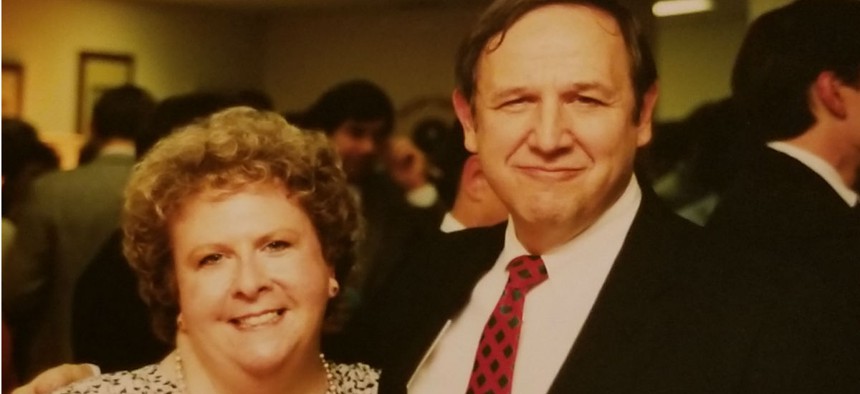Why I Have Faith in Government
A visionary leader’s legacy embodies the value of the civil service.
I believe in good government. I believe in the Constitution. I believe in the rule of law.
Political events over the past 17 months have shaken many of my preconceptions, and occasionally have brought me to tears. But I continue to have faith in our governing institutions.
The reason for this faith is a man named Don R. Clay. I worked for him in several capacities at the Environmental Protection Agency in the 1980s and 1990s. He was a straightforward, low-key guy from southern Ohio who lead key offices in EPA and other agencies over the course of a 40-year career. He taught me how the bureaucracy works and showed me what good governance looks like. He believed in public service.
He was a giant in environmental leadership.
Don encouraged his staff to travel to the communities where our actions affected people’s lives. These were hard trips. We faced ridicule and often animus from local citizens who railed against a government that had let them down. He was humiliated by guerilla theatre tactics at the Stringfellow hazardous waste site in California. He was shouted down at a public meeting in Uniontown Ohio and regularly booed and mocked. At one site, we were escorted by armed guards. “Feel their rage,” he once counselled me calmly, “now let’s go back to D.C. and figure out how to fix it.”
The consummate gentleman, regarded by all as fair, decent and reasonable. His wry humor made even the most painful decision meetings bearable.
Don was known, as he often quipped, for being "good with women." What that meant then, at a time when women struggled to have the equal power and a strong voice at EPA, was that he created a safe place for us to work hard, be heard, and move forward in our careers. Personally, he encouraged me to take chances, ignore internal critics and try strategies that were more common to Hollywood and Madison Avenue than a regulatory agency.
One example was EPA’s partnership with the Take It Back Foundation in Los Angeles to increase public awareness about the need for recycling. Celebrities used their art to reach a wide demographic through 30- and 60-second public service TV and radio announcements. We were pioneers in getting important recycling messages to grass roots audiences.
Don Clay got things done. The list of regulations that aim to limit pollution and protect the public from pesticides and toxic substances is long. He pushed for stronger recycling and reuse laws and addressed the threat of leaking underground storage tanks. Under his leadership, we conceptualized the National Brownfields Program in 1991 to spur economic development while protecting citizens who live near lesser contaminated sites. Today, $2.5 billion of public investment has been leveraged to clean up and insure safe, sustainable reuse of hundreds of thousands of blighted properties across the United States. Failure was never an option, but if it happened, I knew that he had my back. Our vision for Brownfields cleanup is now the law of the land.
He made tough decisions every day with consistency and clear headedness.
“If I’m angering the environmentalists and ticking off private industry, it’s probably just about right,” he would say with a shrug, and sign off on the action with a flourish of his fountain pen.
He often reminded me that the government was there to serve the people and that three separate branches provided checks and balances to ensure no single entity had too much power. He sent me and many co-workers for training so that we would fully understand the Constitution that we had taken an oath to protect.
Don Clay passed away recently at the age of 81. His legacy is why I still believe.
Marjorie Weidenfeld Buckholtz is the president and founder of Environmental Consulting Solutions. Among other positions at EPA, she led the National Brownfields Program, which received numerous awards, including an Innovations in Government Award in 2000 from Harvard’s Kennedy School of Government and a Hammer Award in 2001 from then-Vice President Al Gore.



